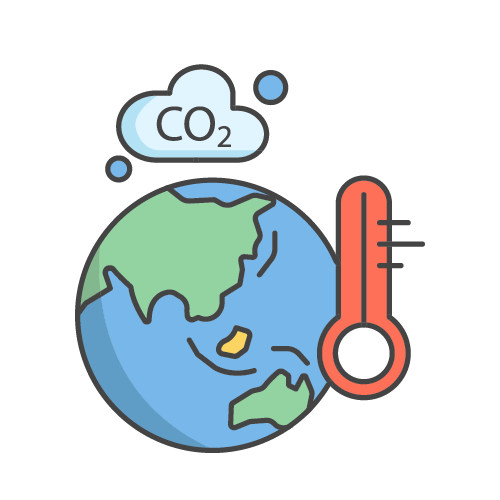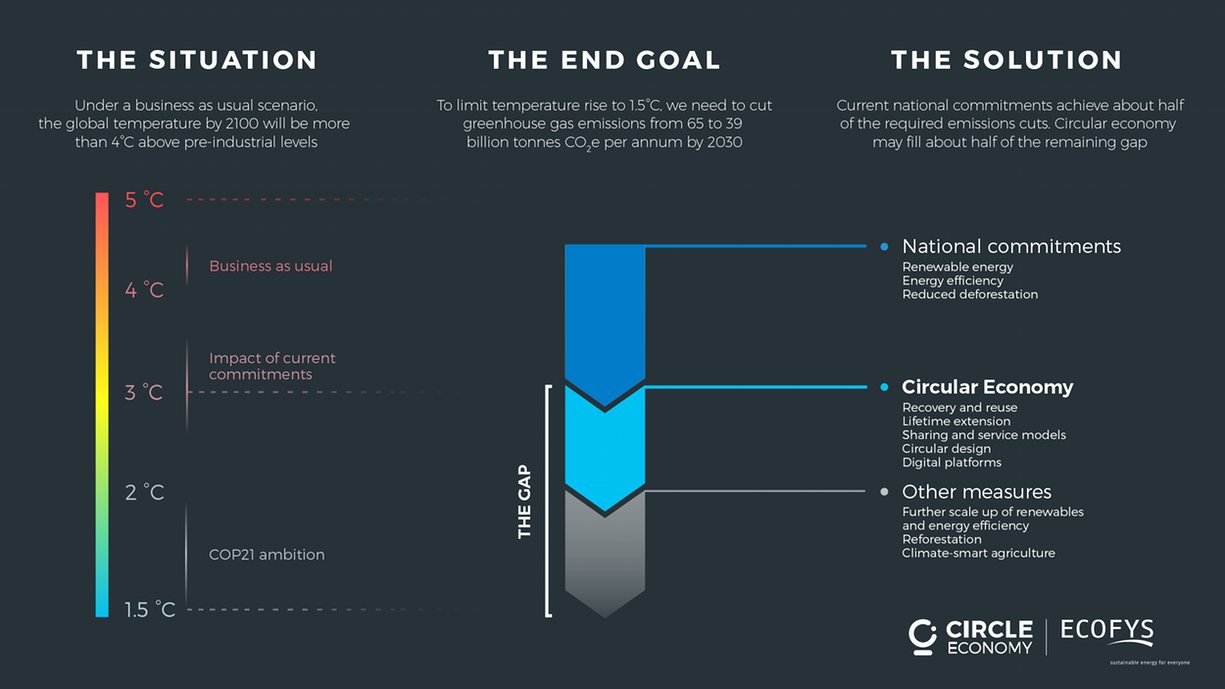Climate Change
Climate Change
Climate change is a change in the statistical properties of the climate system that persists for several decades or longer – usually at least 30 years. These statistical properties include averages, variability and extremes. Climate change may be due to natural processes, such as changes in the Sun’s radiation, volcanoes or internal variability in the climate system, or due to human influences such as changes in the composition of the atmosphere or land use.
Energy from the Sun is the ultimate driver of climate on Earth. The solar energy received by Earth depends on how much the Sun emits and the distance between Earth and the Sun. Part of this sunlight is reflected directly back to space by the atmosphere, clouds, and land, ice and water surfaces. Aerosols (tiny particles in the atmosphere, some coming from human activities) can increase the reflection of sunlight.
Eventually, the solar energy absorbed by Earth is returned to space as infrared (heat) radiation. In the process, it interacts with the whole climate system—atmosphere, oceans, land surfaces and ice sheets. The flows of radiation in the atmosphere are critical in determining climate. The main gases that make up the atmosphere, nitrogen and oxygen, do not interact with infrared radiation.
However, certain gases present in smaller quantities absorb infrared radiation flowing upwards from Earth’s surface and re-radiate it in all directions, including back downwards. By doing this, they impede the outward flow of infrared energy from Earth to space. This is called the ‘greenhouse effect’, and the gases that cause it by interacting with infrared radiation are called greenhouse gases. The most important are water vapour, carbon dioxide (CO2) and methane. The greenhouse effect was identified more than a century ago; Earth’s surface would be about 33°C cooler without it, so it keeps Earth habitable. (Source: Australian Academy of Science)
Circular Economy and Climate Change
Seven messages about the circular economy and climate change
Message One: The way we deal with materials determines a large part of the greenhouse gas emissions: the concept of the circular economy offers a concrete perspective on how we can organise our production and consumption so that it emits less CO2. The transition to a circular economy begs reflection on the question of how we can meet our needs (e.g. living, mobility, food) with less material consumption and how the materials that are truly needed can continue to circulate through the value chain in closed cycles with as little impact on the environment as possible.
Message Two: Circular strategies contribute to the reduction of greenhouse gas emissions: For example, a strategy that can extend the lifecycle of a product leads to fewer products required globally to satisfy a specific need. This then creates CO2 gains in the extraction, production, transport, and waste processing phase of these (avoided) products. Moreover, circular strategies also provide a perspective on additional (local) job creation (e.g. repair, recycling, remanufacturing).
Message Three: A circular economy is a resilient and climate-resistant economy: A circular economy that deals with materials, energy, space, water, and food intelligently is also a resilient and adaptive economy, and one which can better adapt to external trends. Examples of external developments are, of course, climate change as well as demographic developments and technological breakthroughs. By focusing on maximum retention of value of the materials and closing the (local) material cycles, the circular economy possesses a robustness that will also serve well when adjusting to a changing climate. The application of circular principles also makes an economy more resilient on a socio-economic level.
Message Four: Circular regional development leads to climate change: Circular spatial development results in climate gains through the reuse and more intensive use of space that is already in use, rather than taking up new open space. This supposes design and construction practices that take easy adaptability, multifunctional use, and temporary use into account.
Message Five: Taking the footprint of consumption into account: Footprint indicators map out the impact of consumption in terms of greenhouse gas emissions (carbon footprint) and material consumption (material footprint) globally. The power of these footprint indicators is that they provide direction in terms of where the major impacts are and can prevent problems from being solved by shifting them abroad or by de-localising production. These indicators also take the impact throughout the entire value chain into account, which is essential for monitoring a circular economy.
Message Six: Carbon as a resource in a circular economy: For several years now, techniques have been developed in which the CO2 that is released by industrial processes is captured and converted into valuable applications (e.g. construction materials, raw materials for the chemical industry, etc.). This use of CO2 as a raw material for products is known as Carbon Capture and Utilisation (CCU). Some CCU technologies make use of other residual flows (e.g. leftover materials from metal slags), which makes it possible to recycle these waste flows. This way, CCU can contribute to a circular economy for carbon-based materials.
Message Seven: A new fiscal and legal framework is necessary for the transition to a circular and low-carbon economy: The transition to a circular and low-carbon economy requires a fiscal transition (a thorough shift from taxing labour to taxing (raw) materials, waste, and energy) and adapting the legal and legislative frameworks.
In addition to this, the government must make room for jointly managed commons as the third pillar of society, in addition to the market and the government. Commons are what is shared and maintained without organisation by a governmental authority or via traditional commercial transactions. Citizens and companies organise themselves into platforms or associations that are focused on the shared use, maintenance, or further development of commons (e.g. open knowledge, shared goods and buildings, infrastructure, land, neighbourhood parks, material flows, energy, etc.).
(Source: “Seven Messages about The Circular Economy and Climate Change” by OVAM.be, 2019)
Knowledge Centre
This section includes reports on the banking industry & climate change, carbon accounting, carbon capture, carbon footprint, circular economy & climate change, COVID 19, disaster & resilience, GHG calculator, climate law, net zero, policy, technology, tools, images and movies.
References:
- CO2 Cloud: Freepik from Flaticon
- Knowledge Centre: Freepik from Flaticon
- Information: CleanPNG
- Links: Icon Finder
- Video: Freepik






